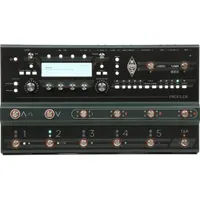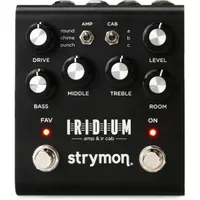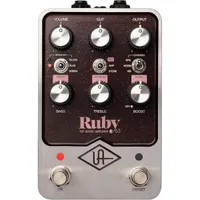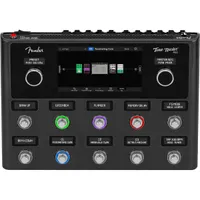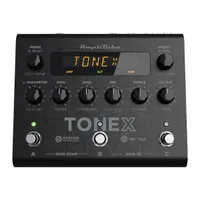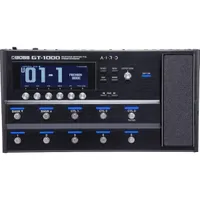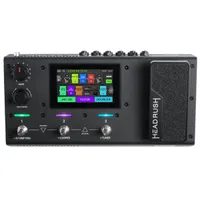Best amp modellers 2025: High-tech tone solutions for all guitarists
Simplify your rig and take your tone anywhere with my pick of the best amp modelling units around
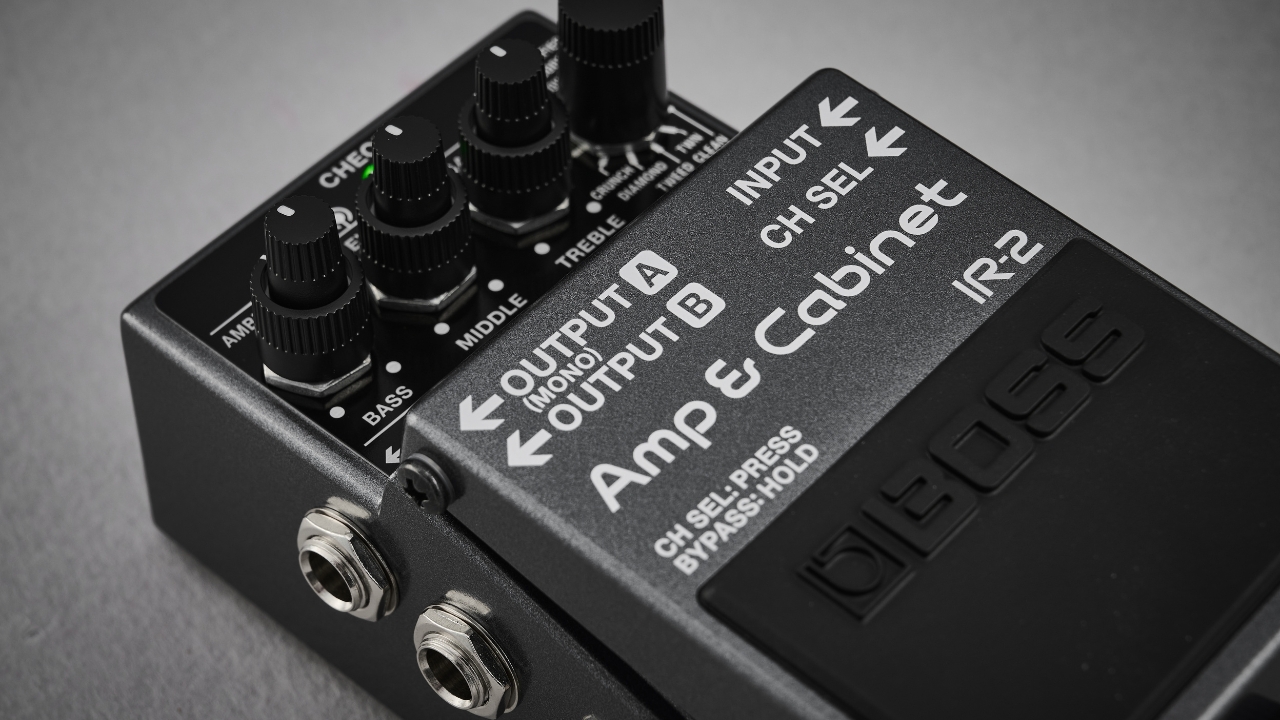
From Jimmy Eat World to John Mayer, more and more professional-level bands are turning to amp modeling for their tone when they head out on the road. The difference between the real deal and modelling is so small, that the many benefits of modeling far outweigh the minimal tone gains you’d get lugging multiple amps around with you. Many of the best amp modelers are now affordable enough for us mere mortals to use too, making it easier to get great-sounding guitars anywhere you go.
I've been using an amp modeller on my own pedalboard for the last few years now, and it's been a game-changing addition to my rig. Sometimes I need full rig simulation, other times I must just need some additional effects, and I can even take it off my 'board for home recording duties. They're powerful bits of kit, which is what makes them so popular nowadays.
Between myself and the rest of the MusicRadar team we've reviewed pretty much every amp modeller out there, which puts us in the perfect position to recommend the best for each use case. With our top picks you'll have all of the bases covered to get great tone wherever you go, accessing all of the world's most famous amps and effects for a fraction of the price buying them all would cost you.
If you want the best of the bunch, then we can't recommend the Neural DSP Quad Cortex highly enough. It sounds phenomenal, has plenty of built-in effects and amp models, and most importantly, is super easy to use thanks to the large touch screen. For pro players, you should have a look at the Kemper Profiler Power Head which is an ultra-powerful bit of kit, whilst those with a little less to spend can get some amazing tones out of the Line 6 Helix LT.
If you’re new to modelling or want to learn a bit more about it before purchasing, have a look at our how to choose section which will help you make a decision. We've also got a helpful FAQ section which features loads of common questions answered by our resident guitar geeks. If you just want to see the best amp modelers available today, keep scrolling for our top picks.
Our top picks

Still the king of modelling, when it comes to realistic amp and effect sounds, the ability to profile, and ease of use it's hard to beat the Neural DSP Quad Cortex.
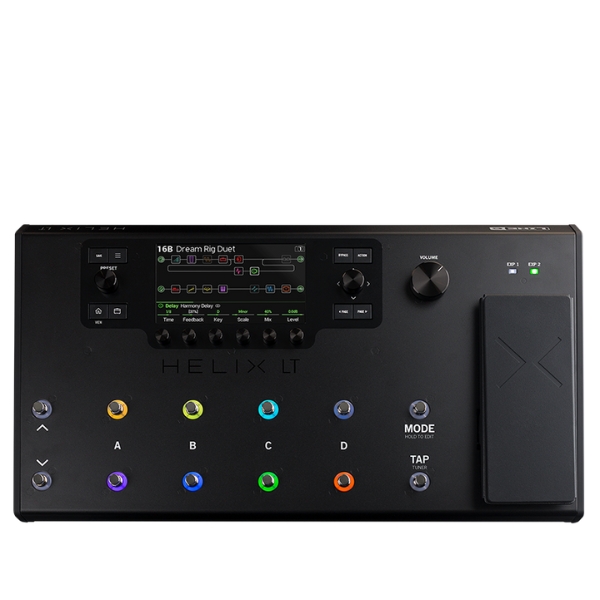
If you want high-quality amp and effects modelling, an expression pedal, and a clear, detailed screen to tweak with, for less than a grand I think the Line 6 Helix LT is excellent value.
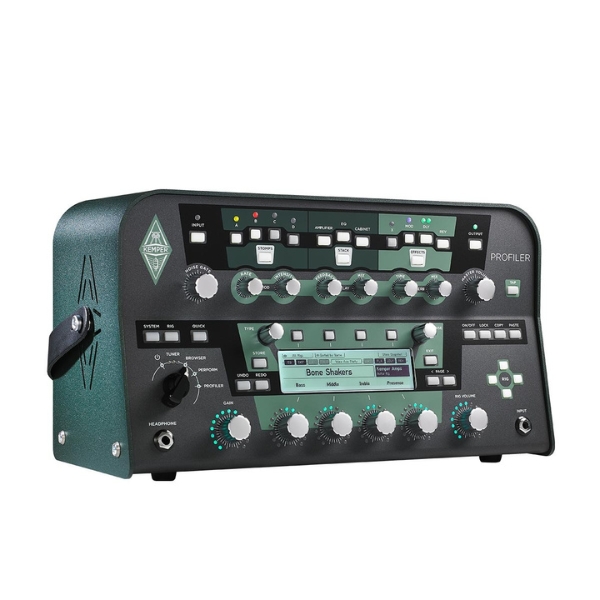
For players who need professional-grade modelled guitar tones, the Kemper Profiler has been the industry standard for some time now thanks to its excellent profiling capabilities.
Best overall
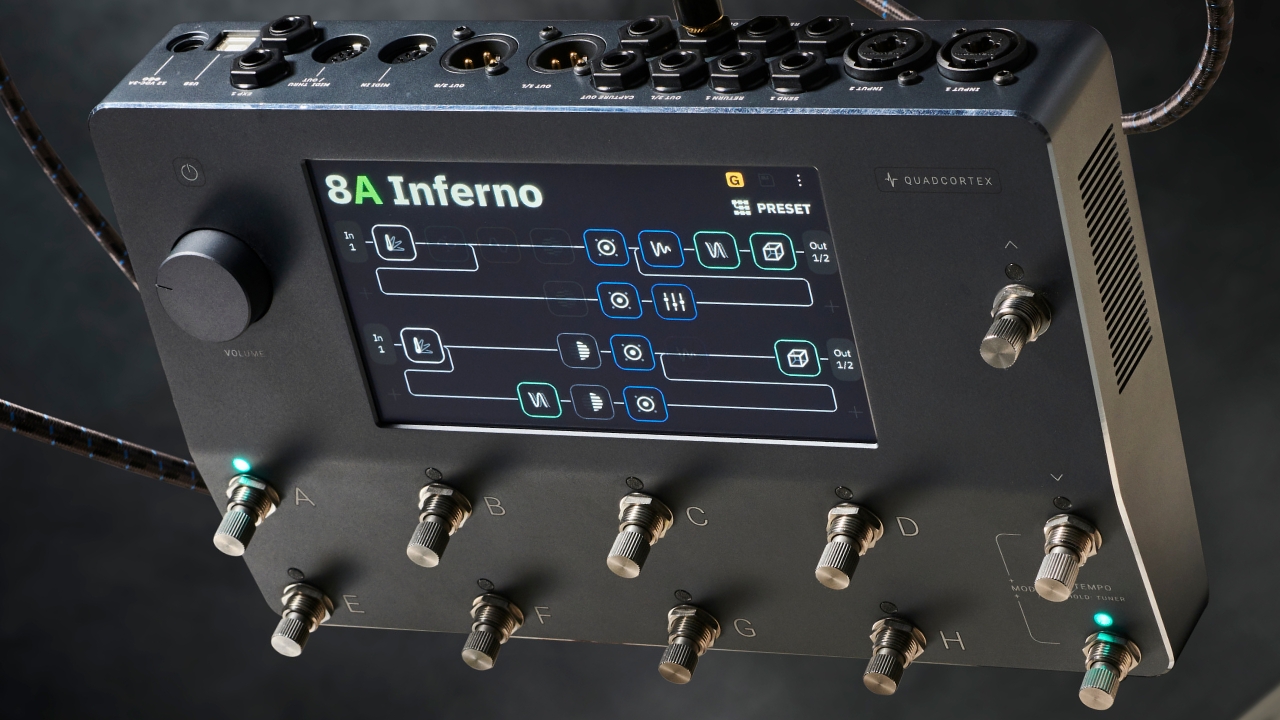
Specifications
Reasons to buy
Reasons to avoid
✅ Buy if you want the best all-around amp modelling experience: With great quality sound, an easy-to-use interface, a compact design, and rugged build quality. There's not much to hate about the Neural DSP Quad Cortex.
❌ Avoid if you're on a budget: Quality like this isn't cheap though, so if you don't want to spend a significant amount of money then you'll need to look elsewhere.
Powered by a 2GHz Quad-Core SHARC DSP, Neural DSP’s profiler-come-modeller might just be the unit to give Fractal and Kemper a run for their money. Its power move lies in being able to run multiple amplifier and effects chains at once with a latency unnoticeable to the human ear.
As the name suggests, you have four independent signal paths to play with at any one time, and you can direct one to feed into another, creating complex wet-dry setups or layers of textured gain to dig into as a song progresses.
If you feel like sharing the love, another guitarist can plug in and use the unit simultaneously. You can run the unit in Stomp mode, just like a pedalboard, in Scene mode, which brings multiple blocks of effects into play, or in Preset mode, in which you can assign tones to a footswitch for quick access.
Elsewhere, there are dual expression inputs, full MIDI capability so you can automate switching and parameter control, plus two effects loops for inviting your outboard hardware to the party. You can save up to 256 presets, which can be tagged for easy search and recall, while live performances and rehearsals can be programmed in advance.
Finally, there’s the Neural Capture profiling function, which uses machine learning to let you make digitised profiles of your favourite amps or stompboxes.

"Indeed, how Neural DSP has integrated all this bleeding-edge tech into a user-friendly package is quite an achievement. It allows you to experiment, of course, and in doing so you might lose the odd afternoon falling through the rabbit hole as you chase tones, but translating the sound in your head to a sound from the unit is as easy as it could be."
Read more: Neural DSP Quad Cortex review
Best value for money
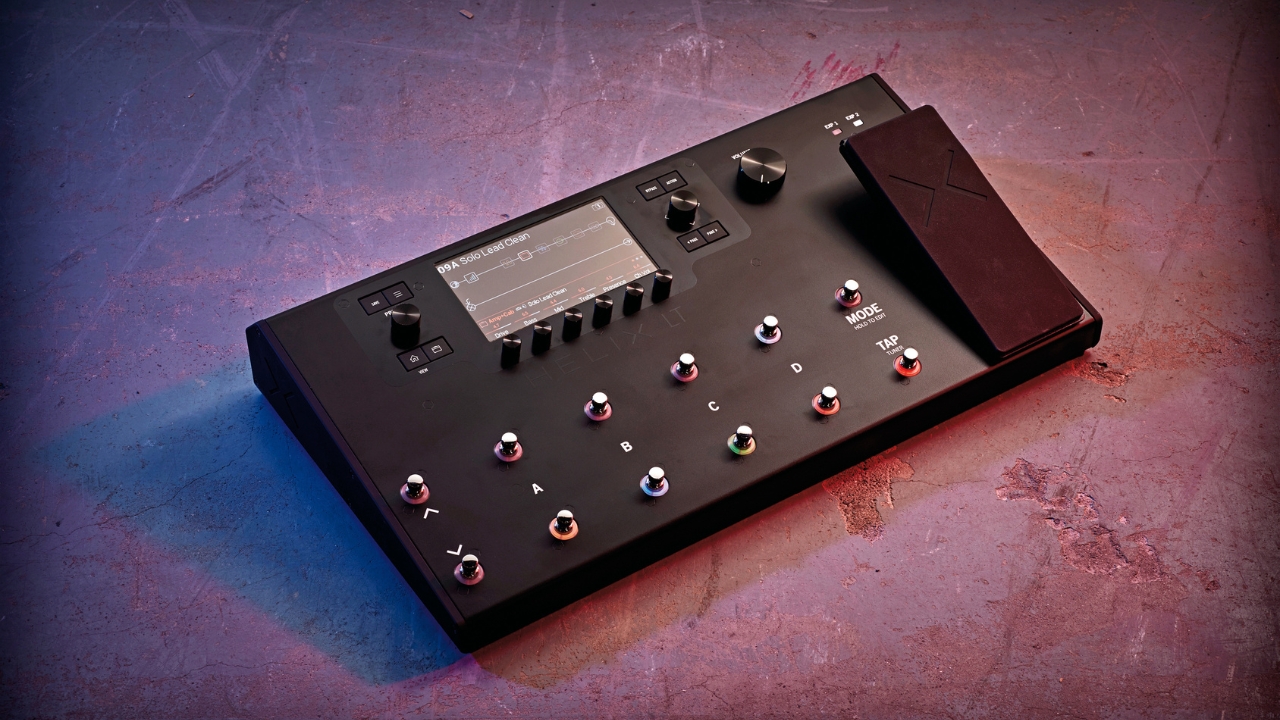
Specifications
Reasons to buy
Reasons to avoid
✅ Buy if you want the most bang for your buck: Price around the $1k mark, the Helix LT isn't exactly cheap, but with consistent upgrades that include all-new amp and effects models, your money goes a lot further with a Helix amp modeller.
❌ Avoid if you need lots of ins and outs: The LT sacrifices the extended connectivity of some of the other modellers here in order to save costs, so if you need to run a complex setup with multiple loops you should look elsewhere.
The Helix LT might be the diet version of Line 6’s flagship modelling floorboard, but it still has a Starship Enterprise-esque amount of next-gen features, which are laid out in a mercifully user-friendly way. With over 200 amp, cab, studio microphone and effects models, you won’t want for options, and Line 6 makes it easy for you to save and recall your favourite sounds.
You can switch instantly between Preset and Stomp modes, the latter of which is ideal for toggling effects on and off mid-song. Line 6 allows for total control of the signal path, from guitar through to effects, amps, cabinets and mic positions. All this can be controlled on the unit or remotely.
One thing I love about the Helix line of amp modellers is the consistent updates that Line 6 puts out. This means you get more features, more amp models, more cabs, and more effects the longer you own the unit.
On the rear of the unit, you’ll find two effects loops that can be used to incorporate external effects and save them to a preset, plus all the analogue and digital I/Os you would expect. At this price, the Line 6 Helix LT is a no-brainer, and for many it’ll end up being the only amp modeller they'll ever need.

"It still has a build quality that instils confidence, and the easy footswitching functionality of its big brother has been retained - each of the 12 footswitches still sits in the centre of a colour-coded LED ring that shows its status, and while the scribble strips were very useful in letting you see what each is assigned to, the colour-coded performance view is an adequate substitute."
Read more: Line 6 Helix LT review
Best for live performance
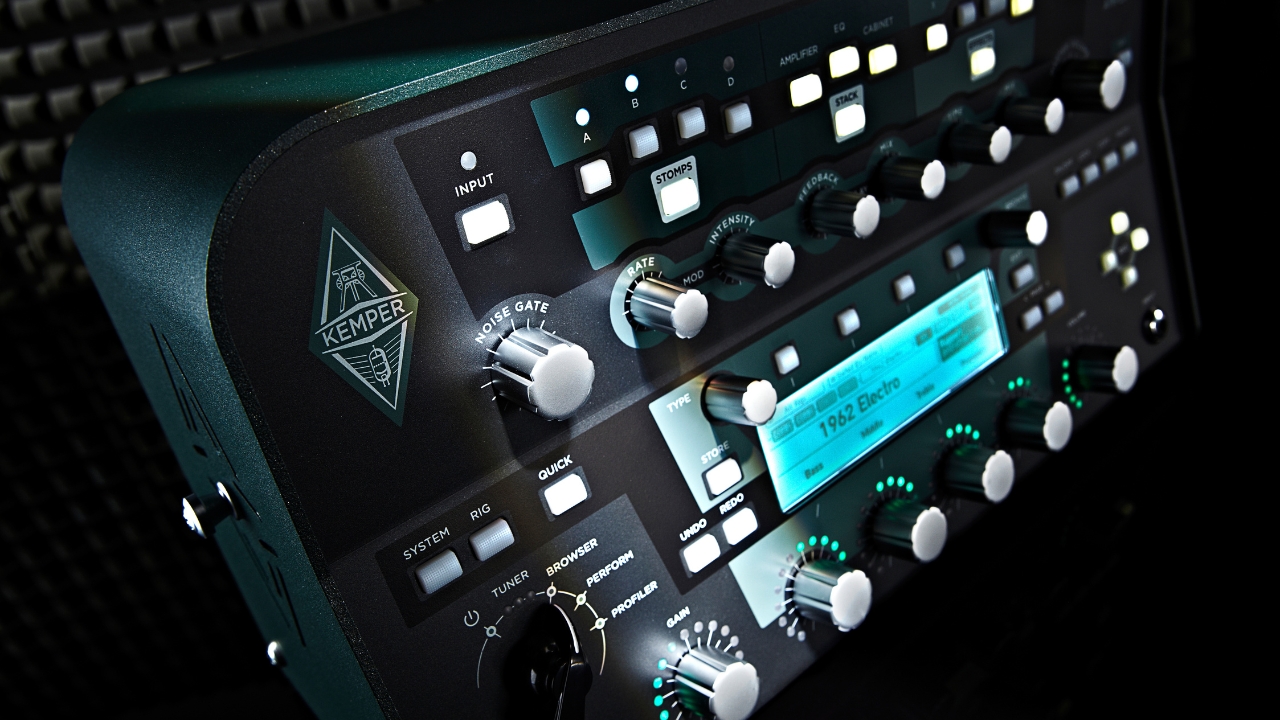
3. Kemper Profiler Power Head
Our expert review:
Specifications
Reasons to buy
Reasons to avoid
✅ Buy if you want to play good-size live venues: For players who play live regularly and tour, the Kemper Profiler Power Head is an incredibly powerful modelling amp that's perfect for live performances.
❌ Avoid if you're a beginner: Profiling amps isn't something you can just jump straight into, so if you're looking for your first modelling amp then you should start with a simpler unit.
Kemper’s bit of kit can profile any amplifier in the world and store its response, to be recalled at your leisure. It does this so effectively that guitar techs have slowly been persuading the world’s touring guitarists to retire their crotchety old Bluesbreaker and take a profile of it instead.
All you need is an amp and a mic to capture the profile. The Profiler comes preloaded with 200 amps, and there are heaps of effects to access, too. There are four Stomp effects and four stereo post-amp effects slots.
What’s great about the Profiler is that you can split the DI signal when recording so that one is recorded with the amp profile and the other is dry, allowing you to reamp painlessly afterwards.
Other neat features include delay spillover, which makes changing presets as smooth as a baby’s head, and the ability to lock settings – this means you can have the same spring reverb and slapback delay when switching between the profiles of, say, an old Magnatone and a Fender Tweed.
The Profiler is available with or without a 600-watt power amp, in a rack-mountable unit or as a floorboard unit. Its Rig Manager and Rig Exchange software help you to keep track of what’s what.
Best budget
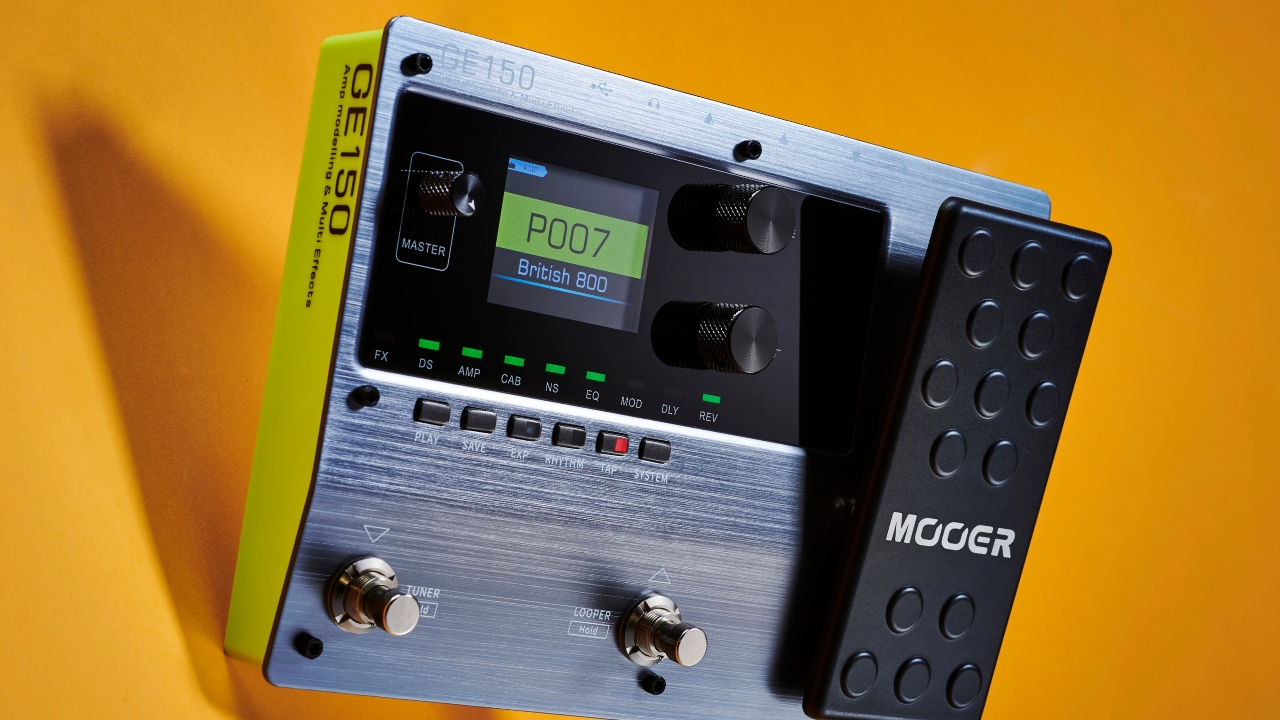
Specifications
Reasons to buy
Reasons to avoid
✅ Buy if you're looking for a low-cost amp modeller: Priced slightly above the $/£150 mark, the Mooer GE150 gives you great sound and plenty of options, while being considerably cheaper than any of the other amp modellers on this list.
❌ Avoid if you need in depth effects: The effects on the GE150 are fine for beginners, but for those who want more complex signal chains you'll want to look elsewhere.
Some players don’t need amp profiling, 8-in/8-out USB audio interfaces and all that jazz, and for beginners and those on a budget, the GE150 is impossible to beat. The build is of high quality, the effects lineup is generous and well realised, and it has lots of practice tools that’ll be invaluable if you’re just starting out.
If the pro units are all-in-one performance and recording solutions, the GE150 presents an all-in-one practice and performance unit for beginners, with an onboard metronome, 40 drum rhythms and an aux input for playing along to your favourite songs – all features that’ll help you to quickly whip your chops into shape. Oh, and there’s an 80-second looper, too.
Once you’ve got your playing into shape, why not record it? The USB connection allows you to record directly to your computer. This is where the cab sims will come in handy, with the ability to upload third-party IRs very impressive at this price, and something that will add space and quality to those recordings.

"If we needed convincing that the Mooer GE150 offered outstanding value for money, even a cursory trawl through the 200 presets onboard did the job. It is indeed scaled down from the GE300's slate, with around half as many models on offer, but we think we have the cream of the crop here, and certainly more than enough to satisfy the vast majority of players."
Read more: Mooer GE150 review
Best compact modeller

Specifications
Reasons to buy
Reasons to avoid
✅ Buy if you want a portable amp modeller to go on your pedalboard: With it being the same size as any other Boss stompbox, the IR-2 is a top option for those who want to add amp modelling capabilities to a packed pedalboard.
❌ Avoid if you need effects: The IR-2 doesn't come with any built-in effects, so if you're looking to replace your existing stompboxes alongside your amp, you'll need to find a different modeller.
Boss has been modelling amps for a long time now, but it’s no small feat to see a fully-fledged amp modeler in the classic compact stompbox format of the IR-2. If you’re an existing pedalboard user and want something that doesn’t get in the way, the Boss IR-2 is a great option.
The range of amp sounds on offer will cover you for anything from Fender cleans to high-gain metal. The sound is super organic and reacts to playing dynamics just like the real thing. The dual-concentric knobs allow you to squeeze a full-size amplifier’s controls into a tiny unit, giving you plenty of tweakability without having to use a computer.
You can load your own IRs by connecting via USB-C, and this is also how you can use it as a direct recording option. A dedicated FX loop and stereo out offer excellent flexibility in connectivity and you can turn off the amp and cab models separately. The amount of features that Boss has squeezed into this unit is truly incredible and for the money, there aren’t many that can compete here.

"Other amp pedals may offer superior tones when it comes to specific models but cost nearly twice as much, or don’t have IR uploading options, direct recording, an FX loop and a headphone output all in one pedalboard-friendly package. Depending on how and where you see yourself using an amp pedal, these things will matter more or less to you. But the IR-2 is very well-featured for its price if you want to keep your options as open as possible."
Read more: Boss IR-2 review
Best for versatility
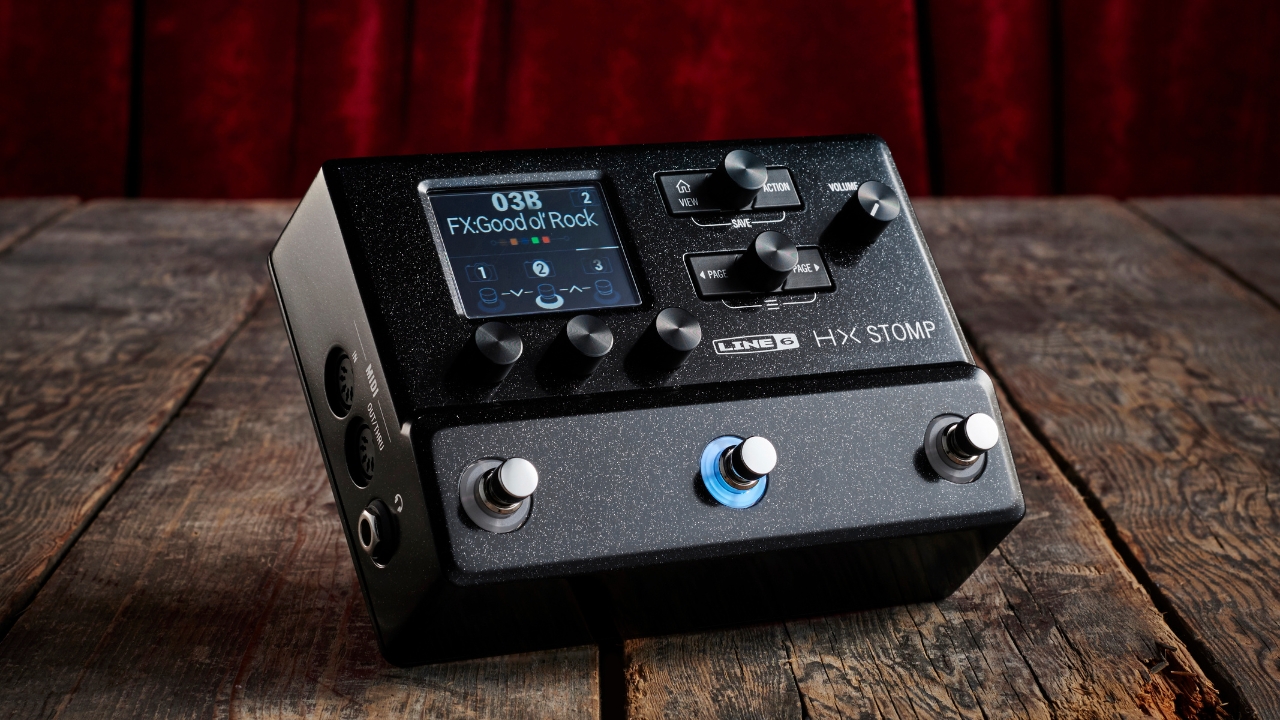
Specifications
Reasons to buy
Reasons to avoid
✅ Buy if you need an amp modeller that can play a lot of roles: Able to be a great practice tool, a complete rig, a powerful addition to a pedalboard, and an audio interface whilst remaining compact, the HX Stomp is an incredibly versatile amp modeller.
❌ Avoid if you like a lot of footswitches: With only three footswitches coming as stock on the unit, some may find the HX Stomp a little limiting if you want loads of different sounds on a single patch.
A compact, pedalboard-friendly 3-footswitch version of Line 6’s ever-impressive Helix units, the HX Stomp has a lot going for it. There are a lot of presets – 126 of them, arranged in 42 banks with three presets a piece. To create those presets, you’ve got over 300 onboard amp, cab and effects models to play with. What more do you need?
Teeny it may be, but the HX Stomp’s MIDI connectivity makes it easy to integrate within a larger rig. There’s an expression pedal input to make it more of a performance tool, and you’ve even got an effects loop for bringing stompboxes into the mix. The stereo-in, stereo-out sound quality is unimpeachable, and you can also upload third-party IRs.
Like its larger siblings, the HX Stomp can be used as an audio interface or for reamping; just connect to your DAW via USB. Though it only features a single SHARC ADSP-21469 processor – one fewer than the Helix – this piece of kit nonetheless packs a jaw-dropping amount of power.

"In terms of the sounds, it’s exactly the high standard that you’d expect from Line 6. On the distortion side, we found a decent amount of mileage with the Rat and DS-1 models, before settling on the OCD as one of the better all-round drives present. Through our single-ended 5W British-voiced tube amp, we found a lot to like with both single-coil and humbucker pickups, with a fat drive sound dipping into heavy saturation as we rolled up the output."
Read more: Line 6 HX Stomp review
Spec comparison
Struggling decide which amp modeller to go for? Here I've put them all head to head with their key specifications to help make your decision a little easier.
Model | Amps | Effects | Ins | Outs | IRs? |
|---|---|---|---|---|---|
Neural DSP Quad Cortex | 90+ | 70+ | 4 | 6 | Yes |
Line 6 Helix LT | 80+ | 200+ | 1 | 2 | Yes |
Kemper Profiler Power Head | 100+ | 200+ | 3 | 7 | Yes |
Mooer GE150 | 55 | 151 | 1 | 2 | Yes |
Boss IR-2 | 11 | N/A | 1 | 2 | Yes |
Line 6 HX Stomp | 80+ | 200+ | 2 | 2 | Yes |
Also consider
For me, the amp modellers above should cover the needs of most guitarists. That said, I appreciate there's no one size fits all solution when it comes to guitar tone, so here are some more great options to choose from.
Kemper Profiler Stage
100+ amps | 200+ effects | 1-in, 4-out
The Profiler Stage brings all that Kemper magic to a floorboard unit. Does it translate? Well, the tech is the same, the sound quality is the same, and the Profiler Stage has everything needed to be the heart of a digital rig. In terms of sound, the world of guitar amplifiers is your oyster, and if you aren’t fussed about a power-amp option, this is a great choice for a self-contained Kemper experience.
★★★★½
Read more: Kemper Profiler Stage review
Strymon Iridium
3 amps | 1 effect | 1-in, 2-out
The three sounds in the Iridium model a Fender Deluxe Reverb, a Vox AC30, and a Marshall Plexi, giving you three solid bases to build your tone upon. Three cabinet selections for each offer extra flexibility, with the ability to load your own if you wish. A ‘favourite’ preset footswitch essentially allows for running two different amps at once, great if you need flexibility in your rig.
★★★★½
Read more: Strymon Iridium review
Universal Audio UAFX Ruby
3 amps | 2 effects | 1-in, 1-out
Like all the UAFX series, the Ruby provides you with a simple stompbox-style layout that makes dialling in your desired tone a breeze. There are three channel types available via a switch on the right-hand side that give you a Brilliant, Normal, and Vibrato option to use. We particularly enjoyed the Brilliant channel, which models the original ‘Top Boost’ circuit of an AC30.
★★★★½
Read more: Universal Audio UAFX Ruby review
Fender Tone Master Pro
100+ amps | 100+ effects | 2-in, 4-out
The selection of amps is as you’d expect, from the Deluxe Reverb to the Bassbreaker you’re well covered if you love Fender amps. It also features an official EVH 5150 model, bringing one of the world’s most popular metal amps to modelling lovers everywhere. There are loads of effects too, from room and shimmer reverbs to fuzz pedals and whammy sounds.
★★★★½
Read more: Fender Tone Master Pro review
IK Multimedia Tonex
100+ amps | 7 effects | 1-in, 2-out
It's worth noting that ToneX's primary focus is on amp modelling, not effects - with only reverb and compression included. So, if you are looking for a do-it-all multi-effects pedal, this isn't it. That said, if you need outstanding amp tones that are almost indistinguishable from the real-world units they are modelling, this is the floorboard for you.
★★★★½
Read more: IK Multimedia Tonex review
Boss GT-1000
22 amps | 118 effects | 1-in, 4-out
The Boss GT-1000 offers a 10-footswitch, pro-quality setup at a price that’s more than tempting to the serious amateur. Operationally, Boss arranges your sounds into patches, each containing the full signal chain from amp through to cabinets and effects. The amplifier models are breathtaking, fleshed-out and organic thanks to AIRD technology that builds upon the Tube Logic paradigm. The 32-bit, 96 kHz sampling offers superb sound quality, and there’s an abundance of headroom.
★★★★☆
Read more: Boss GT-1000 review
HeadRush MX5
50 amps | 65 effects | 1-in, 2-out
The HeadRush MX5 takes everything that was great about the larger HeadRush Pedalboard and condenses it down into a unit that will fit into the front pocket of your gig bag. Detailed amp models and high-quality effects are the name of the game here, with an intuitive touch screen that will have you up and editing in no time.
★★★★☆
Read more: Headrush MX5 review
How to choose
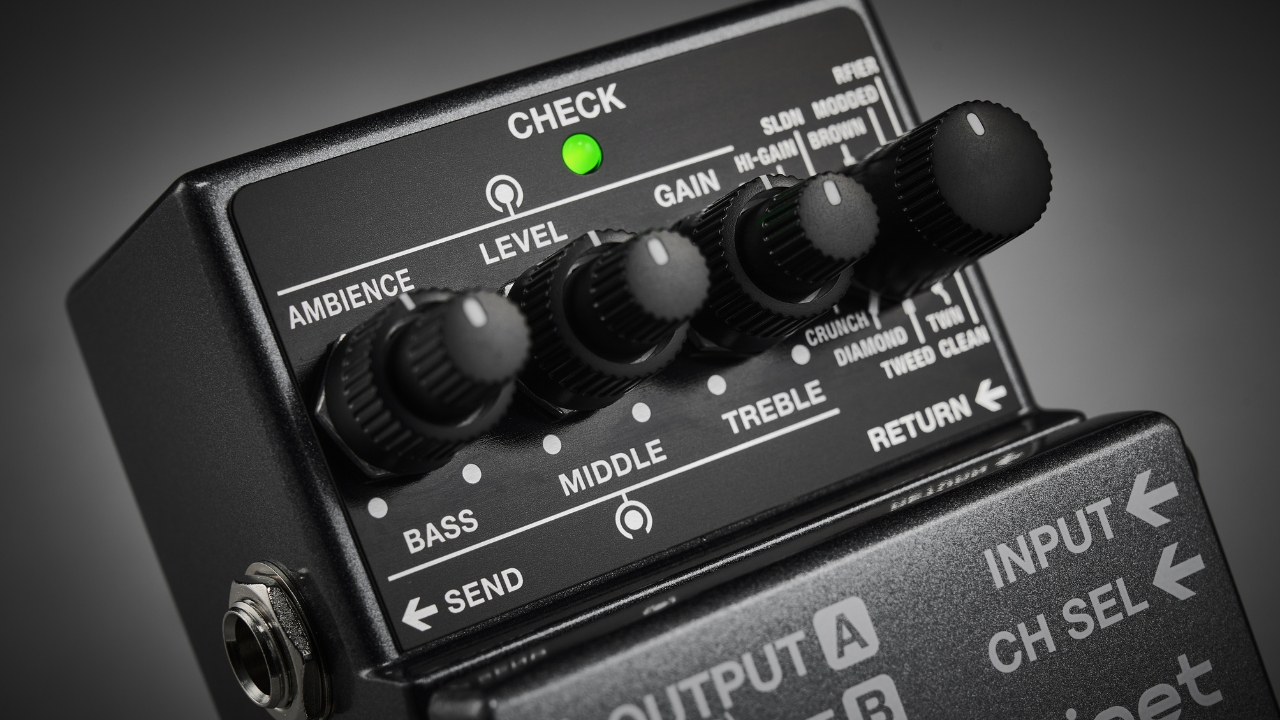
If you're new to amp modelling, then it might seem a little overwhelming trying to decide which is best for you. I've been using amp modellers for a long time now, and reviewed plenty too, so here are the things I think you should look out for when deciding which amp modeller to purchase.
1. DSP
MusicRadar's got your back
DSP is crucial to how an amp modeller works, so the more powerful this is, the more accurate your emulations will be. You’ll also want to look into how your amp modeller handles editing and patches. Some of these modellers have some serious depth to them and manual diving will be a requirement. If you’re the kind of player that balks at this kind of thing then you may want one of the simpler offerings in this guide.
2. Impulse responses (IRs)
Amp modellers now replace your entire rig, so looking at the options you have here is a must too. Bearing in mind pretty much every amp modeller will have a feature list the length of your arm, one of the most important of these is something called Impulse Responses (IR).
IRs are models of guitar cabinets and the space they occupy and can seriously beef up your recording capabilities and live sound when used correctly. Have a look and see if your chosen modeller allows you to edit or upload your own, as this will be crucial to getting a great sound.
3. Sound
There’s so much choice here and so many features that it can be a little daunting trying to pick one, but at the end of the day the sound is the most important of all. Plenty of the manufacturers here have sound demos on their websites so if you can’t try one out in real life, grab a good pair of headphones and find the one with the sounds that inspire you the most.
FAQs
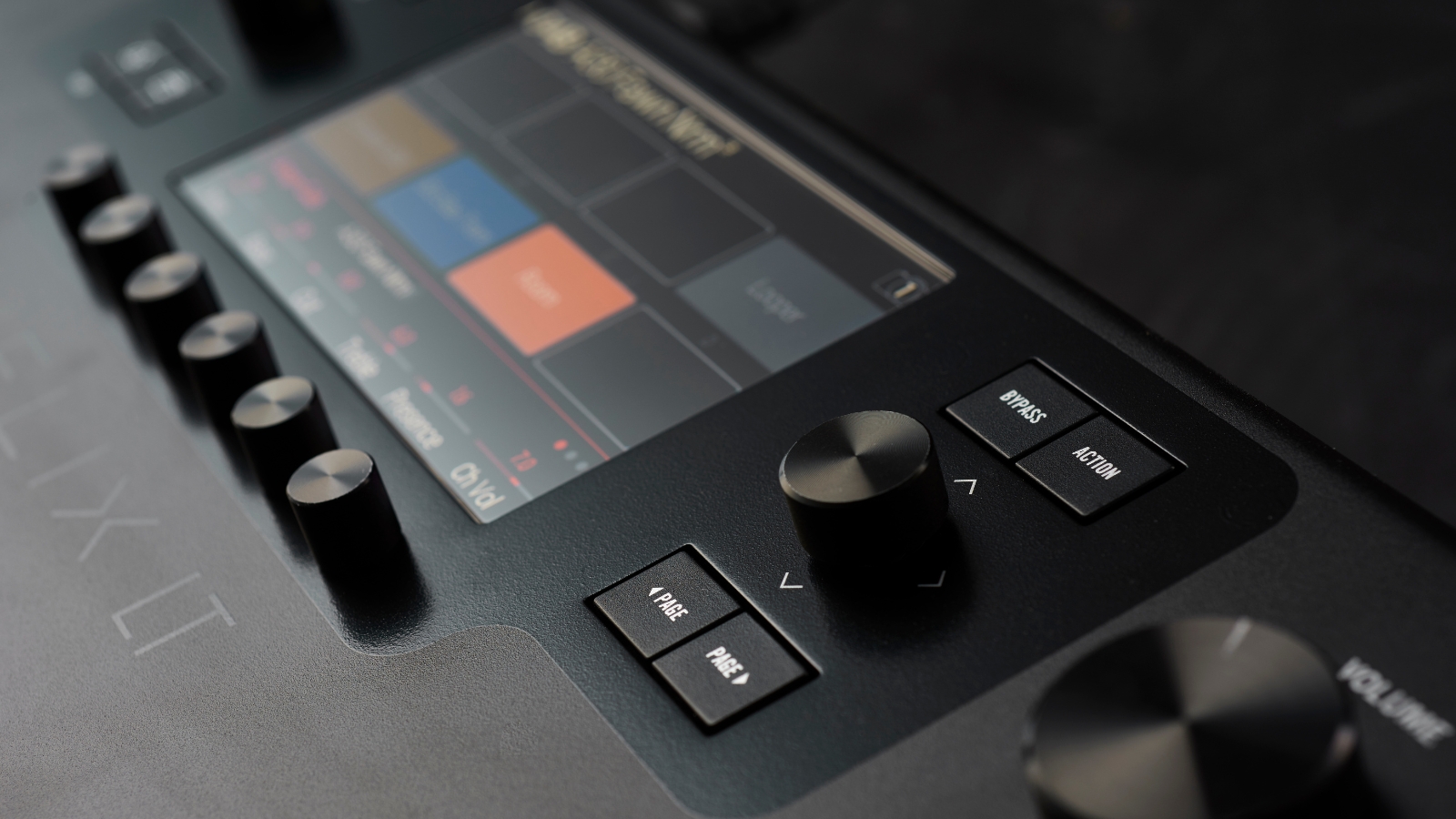
How do amp modellers work?
Amp modellers have come a long way since the early days of the Tech 21 SansAmp but the basic idea remains the same. Circumvent the need for carrying around multiple amplifiers and effects by utilising Digital Signal Processing to emulate the sound you need.
What is DSP?
DSP could have an article on its own, but the basic principle is as follows. First of all your soundwave, in this instance, an amplifier is recorded via a microphone. Using an Audio Digital Conversion (ADC) chip, your signal is turned into 1s and 0s that a computer can understand. This signal is then transferred to the Digital Signal Processor itself, typically some form of computer processing chip whereby the signal can be stored, edited, or transferred. Going the other way the signal then passes through a Digital Audio Conversion (DAC) chip to convert it from 1s and 0s back into a soundwave before being passed to your speakers and back out to your ears.
What does an amp profiler do?
An amp profiler is different to an amp modeller in the way it operates. A profiler essentially takes a snapshot of an amplifiers tone, giving you a very accurate approximation of its sound with particular settings. This means you get a fantastic representation of the tone, but it does mean that further EQ settings might not be as accurate as the real thing. Profiles are a term typically used by Kemper, most other companies will refer to it as a capture.
Can you gig with an amp modeller?
You certainly can, and many pro guitarists are regularly using amp modellers on tour, including some of the biggest artists in the world like John Mayer and U2's The Edge to name just a few. An amp modeller does away with certain complications and makes it easy to get the same sound night after night when playing live. You will need good monitoring though, which might make them ill suited to those playing smaller venues.
What the pros say
So many professional guitar players are deciding to ditch the traditional amps and move to a fully digital rig. Below you'll find a selection of interviews we've conducted recently with our favourite players detailing what they love about amp modellers.

We sat down with Foo Fighters' lead guitarist Chris Shiflett, who explained why he has chosen to ditch the amps and use the QuadCortex for his solo tours.
“It's everything right now. That's all my effects pedals. That's all my amps. That's my whole pedalboard at the moment. That's the most essential piece of gear, I guess, right now.”
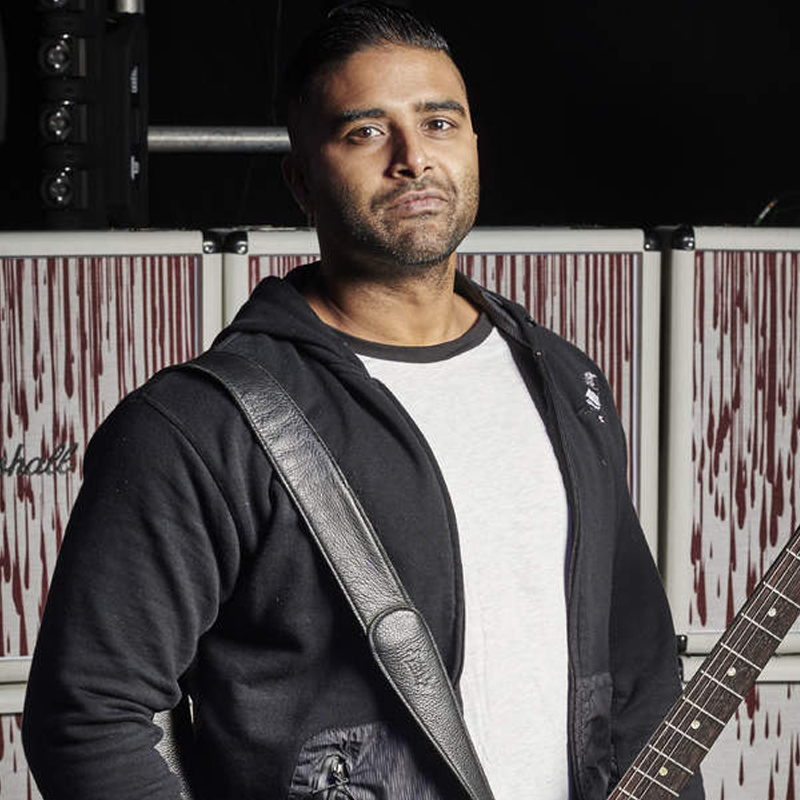
The Sum 41 guitarist is a massive fan of the Kemper Profiler, and in this interview, he revealed that it's more than a stage tool - he also used it to record the band's new album.
“I would send Deryck files using a profile of his old [Marshall] Plexi. I believe it's a ‘72 or ‘73. It was modded out by John Suhr, so it's got these incredible mods done to it. It just punches in the right place."

The ex-Guns N' Roses guitarist is a huge fan of the Line 6 Helix, so much so that it has become the centre of his live rig. Read the full interview to find out more.
“This one thing has replaced 95% of my rig! Since I’ve been using it, I’ve become so comfortable with it. We all have certain things we just look at and can instantly get what we need intuitively. For me, that’s the Helix."

We sat down with Dustin Kensrue to discuss his writing process. The Thrice frontman and guitarist told us he uses the Line 6 Helix both on stage and off.
“I use Line 6 Helix so it's actually really versatile. I can use that on the computer or just the pedalboard plugged in and have the exact same sounds that I do live which is really helpful."
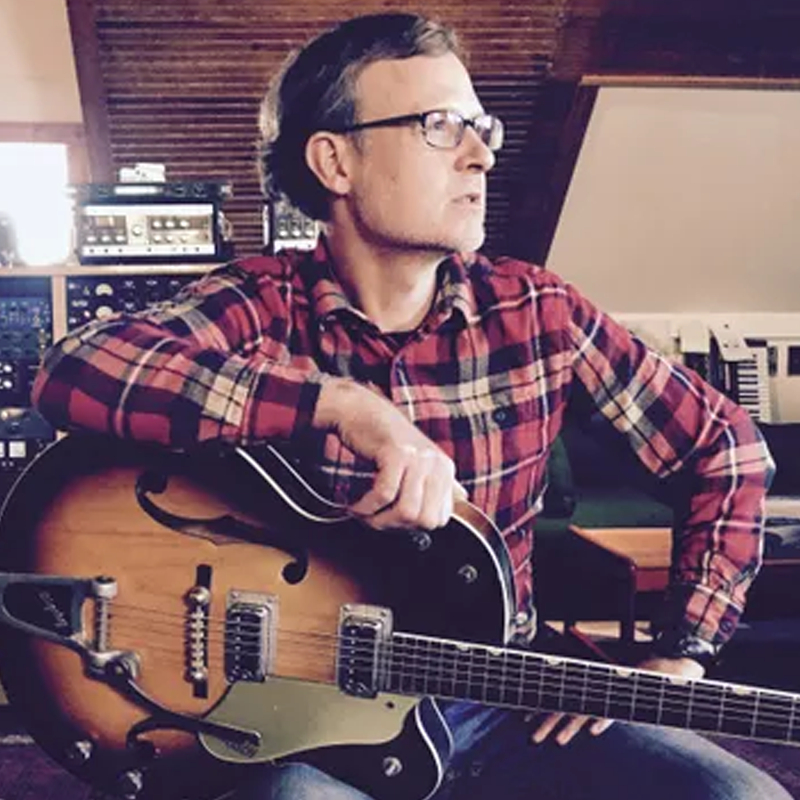
In this MusicRadar interview, National and Interpol producer Peter Katis reveals that he uses amp modellers on more than just guitars.
"I use guitar amp modellers all the time, but most of the time not on guitar. They’re cool distortion boxes for drums or keyboards or vocals. If I can’t get a good guitar sound, I’d like to think I’m doing something wrong. But for people in different circumstances who can’t do that, I’m sure you can do a lot with modelling now."

When we caught up with Steve Howe, he opened up about using Line 6 modelling to recreate his classic Yes guitar tones.
"Fifteen years later and the Helix is a different kind of pedalboard. I think when Line 6 joined forces with Yamaha, they helped them a lot. Each time they've brought a new pedalboard out that's what I've been using."
How we test
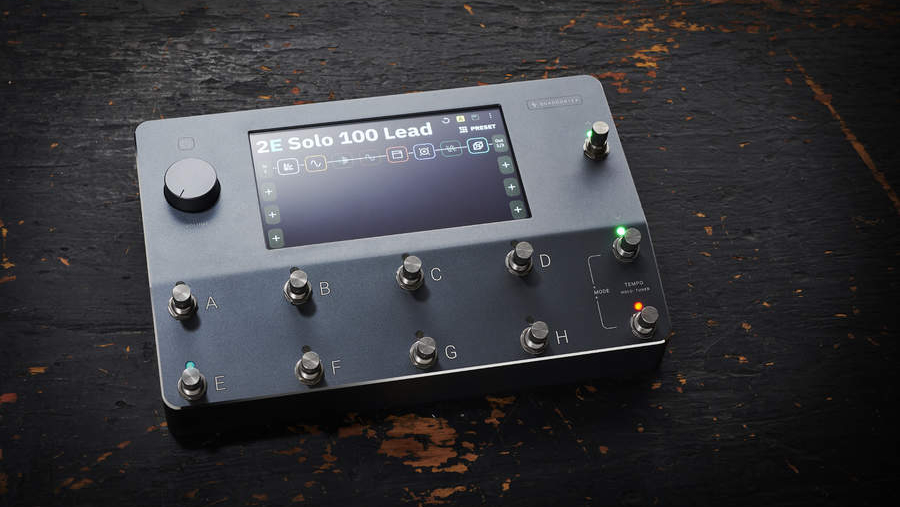
In the realm of amp modellers, our writers at MusicRadar bring a wealth of real-world experience and expertise to guide you in selecting the optimal choice for your musical endeavors. As avid musicians, many of us have spent countless hours on our local music scenes, both on stage and in the studio, forming the foundation of our recommendations. This practical, hands-on involvement ensures that our insights resonate with the diverse needs of our audience.
Our team goes beyond the spec sheet; we plug in, crank up the volume, and let the modellers speak for themselves. This immersive approach allows us to assess not just the technical aspects but also the nuanced characteristics that make a modeller a genuine asset for musicians. From the responsiveness of the interface to the authenticity of the tones, our goal is to encapsulate the essence of each modeller through the lens of our own playing experiences.
As music enthusiasts ourselves, we recognize the significance of finding a modeller that aligns with your budget, technical specifications, and, most importantly, inspires your creativity. Our selection process is a fusion of technical expertise and a genuine passion for music, ensuring that each recommended amp modeller isn't just a piece of gear but a partner in your musical journey.
Find out more about how we test music gear and services at MusicRadar.
Related buyer's guides
- Sharpen your guitar chops with our pick of the best practice amps
- The best acoustic guitar amps for buskers and gigging guitarists
- Is space an issue? Here are the best desktop amps
- Get the tone on a budget with the best budget guitar amps under $500/£500
- Got a little more to spend? Check out the best guitar amps under $/£1,000
Want all the hottest music and gear news, reviews, deals, features and more, direct to your inbox? Sign up here.

Matt is a Junior Deals Writer here at MusicRadar. He regularly tests and reviews music gear with a focus on audio interfaces, studio headphones, studio monitors, and pretty much anything else recording-related. Matt worked in music retail for 5 years at Dawsons Music and Northwest Guitars and has written for various music sites including Guitar World, Guitar Player, Guitar.com, Ultimate Guitar, and Thomann’s t.blog. A regularly gigging guitarist with over 20 years of experience playing live and producing bands, he's also an alumnus of Spirit Studios, where he studied studio engineering and music production.
